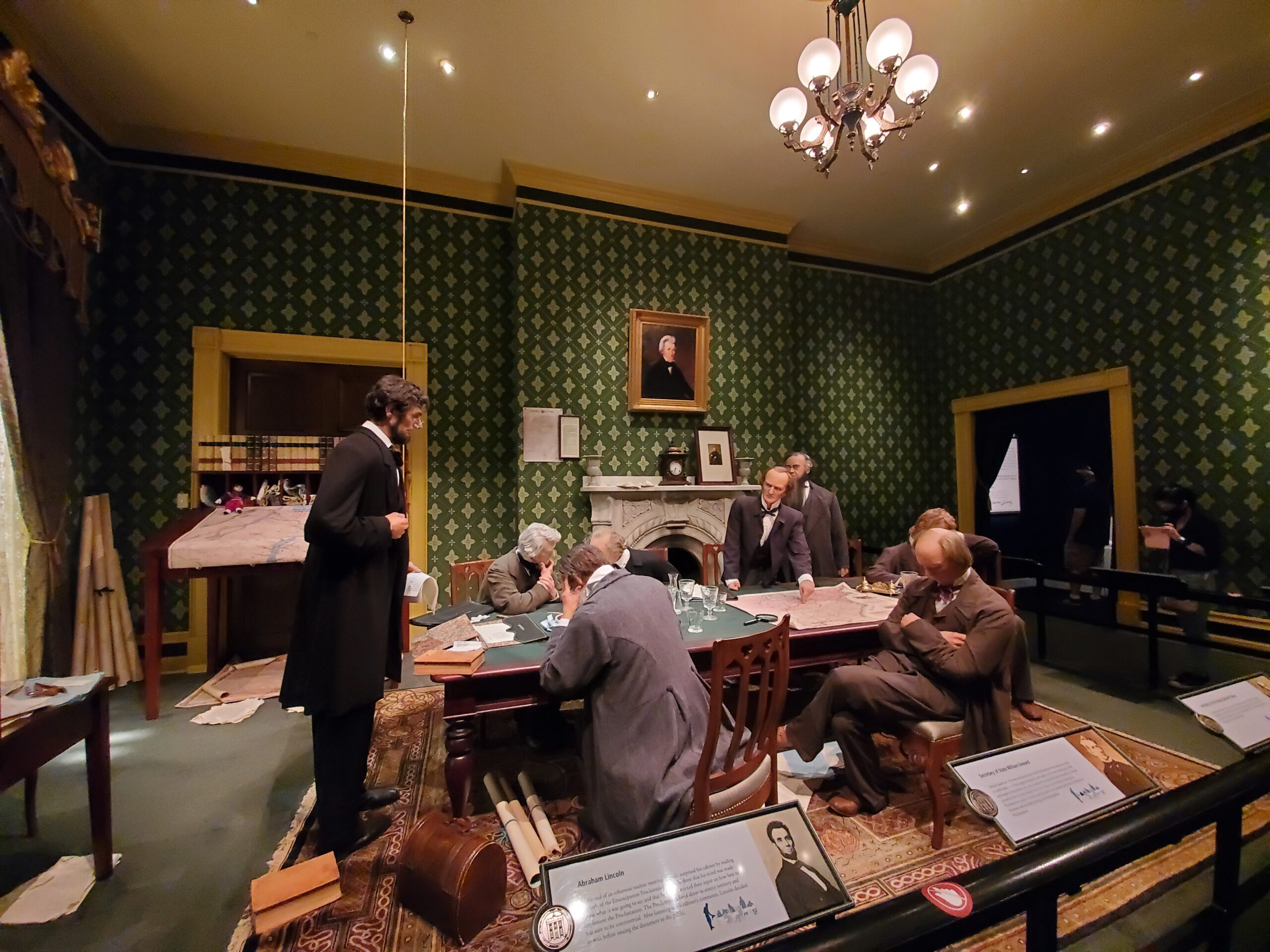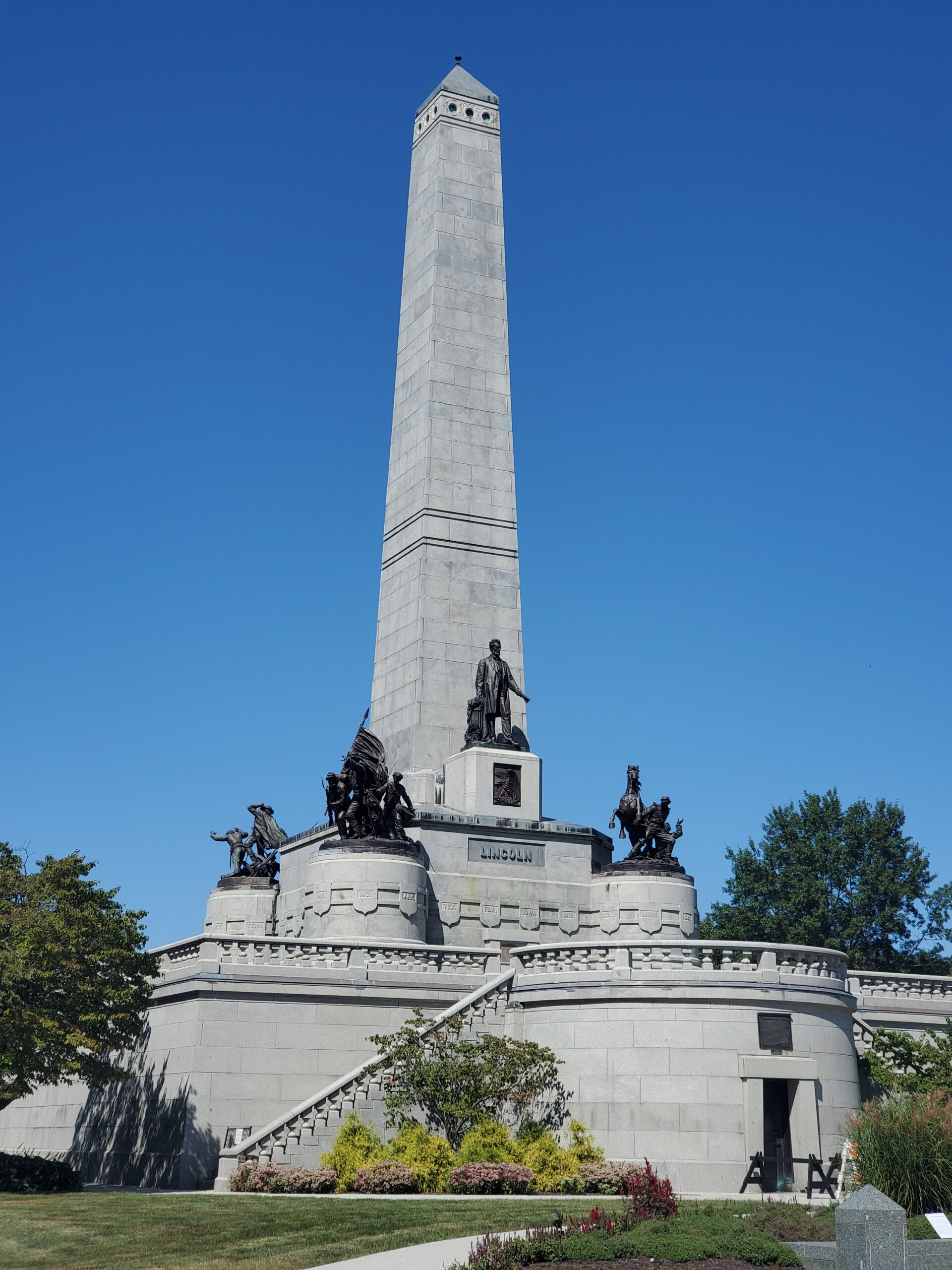When our family needed to make a trip to the Chicago area for a family funeral in early September, we decided to make some memories and fit in some educational adventures for the school-age grandchildren, as well.
With the Chicago area being under a quarantine order, our plans of saying hello again to the T-Rex named Sue at the Field Museum of History and the belugas and jellyfish at the Shedd Aquarium didn’t pan out. St. Louis, a midway spot on our route, seemed like it might offer some alternatives with its zoo and newly renovated Museum of the Gateway Arch — and you can’t beat free admission, right? Especially when you’re traveling with three adults and four kids ages 16, 15, 13, and 11.
It wasn’t until the return leg home that we realized we could make a stop in the Illinois capital of Springfield, where Honest Abe Lincoln got his start in politics. Springfield is about 3 ½ hours south of Chicago and 1½ hours north of St. Louis, right off of US 55, so it didn’t even require a detour. That stop turned out to be a better part of the trip, providing a timely history lesson about politics and social justice, especially for the four grandchildren.
We initially thought we’d just go to the Abraham Lincoln Presidential Library and Museum, but we discovered that there are other Lincoln-related sites besides the museum, which opened in 2005.
We added visits to the preserved four-block Springfield neighborhood where the Lincoln family lived from 1844 until 1861 and the large granite monument in Oak Ridge Cemetery where the assassinated 16th president, his wife and three of their four sons are buried.
Only the museum has an entrance fee, so it was a budget-friendly stop, too. Museum admission is $15, with discounts for seniors, military and children.
 Because of COVID-19 precautions, we couldn’t visit the library, located adjacent to the museum, as it’s currently open only to researchers by appointment. When open to the public, the library displays select artifacts and documents and also has special exhibitions.
Because of COVID-19 precautions, we couldn’t visit the library, located adjacent to the museum, as it’s currently open only to researchers by appointment. When open to the public, the library displays select artifacts and documents and also has special exhibitions.
The Lincoln family home and the publicly accessed buildings that are part of the historic street (which operates as a National Park Service site) have been temporarily closed since mid-March, but visitors can still get a sense of the street’s residents by reading large signage boards in front of the historic homes.
When visited together, the museum, the historic street and the tomb offer a fairly comprehensive look at Lincoln’s entire life and what influenced him: from growing up in a backwoods Kentucky cabin to practicing law and entering politics in Springfield to his presidential legacy and ultimately his assassination and how the country mourned his death.
Our first stop was Lincoln’s neighborhood, which one sign noted was “a lively place with people of different ages, ethnicities and religious beliefs.” The residents included the immigrant family of Julius Rosenwald, who went on to be a business partner in Sears, Roebuck & Co. and worked with educator Booker T. Washington to provide schools for African Americans, and Portuguese immigrant Charlotte de Souza who sewed Mary Lincoln’s dress for Lincoln’s first inauguration. Other residents included women business owners and free African-Americans. Lincoln’s two-story home in the 4½ block neighborhood was the only one the president ever owned.
While it would have been interesting to get a look inside the homes, we found the stories and anecdotes on the signage to be insightful. One sign in particular, called “The Long Road to Washington,” summarized that Lincoln’s life experiences of living in three states and finding ways to better himself led to his belief that every person should have the opportunity to improve his condition.
At the presidential museum, which is about a half-mile away from his former neighborhood, two major exhibition areas help bring Lincoln to life. The first exhibit starts with a walk through a replica of Lincoln’s boyhood cabin and takes a visitor through Lincoln’s run for the presidency in 1860. (Trivia note: Mary was not Lincoln’s first love.) The second features a White House replica as a backdrop and focuses on the years of his presidencies.
For everyone in our family group, the replica scene of Lincoln and his cabinet members gathered around a conference table and discussing the Emancipation Proclamation was one of the better parts of the museum’s displays. The signage provided information about each leader’s reaction, giving insight to the kinds of political negotiations that often go on in government behind closed doors. A slave auction scene, similar to the one Lincoln observed as a young adult in New Orleans, also resonated with our family, as we’d just buried my father-in-law, the grandson of a slave.
If you think current social media memes about political leaders are ruthless, you should see the wall of editorial cartoons and caricatures that depicted Lincoln in all kinds of unflattering light, from an incarnation of the devil to someone insane being carted off to a mental hospital.
The White House exhibition area ends showing the long route his funeral train took to bring him back to Springfield and with a re-creation of him lying in state.
At the time of our trip, the museum was operating on timed admission every quarter-hour from opening until two hours before closing, but it was fairly easy to book online and there weren’t a lot of other visitors to worry about. The museum is open 9 a.m. to 5 p.m. daily and closed Thanksgiving, Christmas and New Year’s days.
The tomb is around a 10-minute drive from the museum. The visit won’t take very long, even if you have to wait while the attendants limit the number of visitors inside the building, but it’s pretty impressive, particularly from the outside. Dedicated in 1874, the large monument features a statue of Lincoln and statues of four Union military units. Reportedly, Lincoln wasn’t buried below the granite sarcophagus until 1901.
We did continue our trip to visit the free attractions in St. Louis. Our visit to the St. Louis Zoo made everyone a bit anxious. While the attraction is doing timed, ticketed admissions, that didn’t seem to limit the number of visitors, judging by the full parking lots and the crowded walkways throughout the zoo. And despite signage to keep six feet apart, lines at certain animal stations were still shoulder to shoulder.
Museum of the Gateway Arch, which reopened with a new name in 2018 as part of a $380 million renovation of the Arch facility and grounds, nicely complimented what seemed to be our theme of learning more about America’s history.
The new museum covers the founding of St. Louis in 1764 to the building of the Arch in 1965, and it has six themed areas. To the best of our recollection from having visited the previously named Museum of the Westward Expansion as part of a family trip more than five years ago, the exhibits now include more and various cultural narratives of the government’s expansion into the West. The new exhibits feature far more interactive and touchscreen displays, which we didn’t fully experience because of sanitary concerns during COVID-19. (Bottles of hand sanitizers on tables were available outside the themed areas.)
While it’s free to visit the Arch facility where the museum is located, the National Park Service does require timed tickets to enter. We got our tickets onsite at the ticket counter for a designated time.
For accommodations, we ended up renting Airbnb homes since it seemed to be the most practical for our large group. They allowed us more space to spread out during our down times and also cook meals to hold down expenses. If you use Airbnb, be sure to scrutinize the reviews, which often give insight into the cleanliness, the availability of the hosts to respond to concerns and locations of the homes.
Contact Amy Geiszler-Jones at algj64@sbcglobal.net.









